African Coffee producing area and Coffee production area Distribution Map introduction to the Flavor characteristics of Coffee varieties
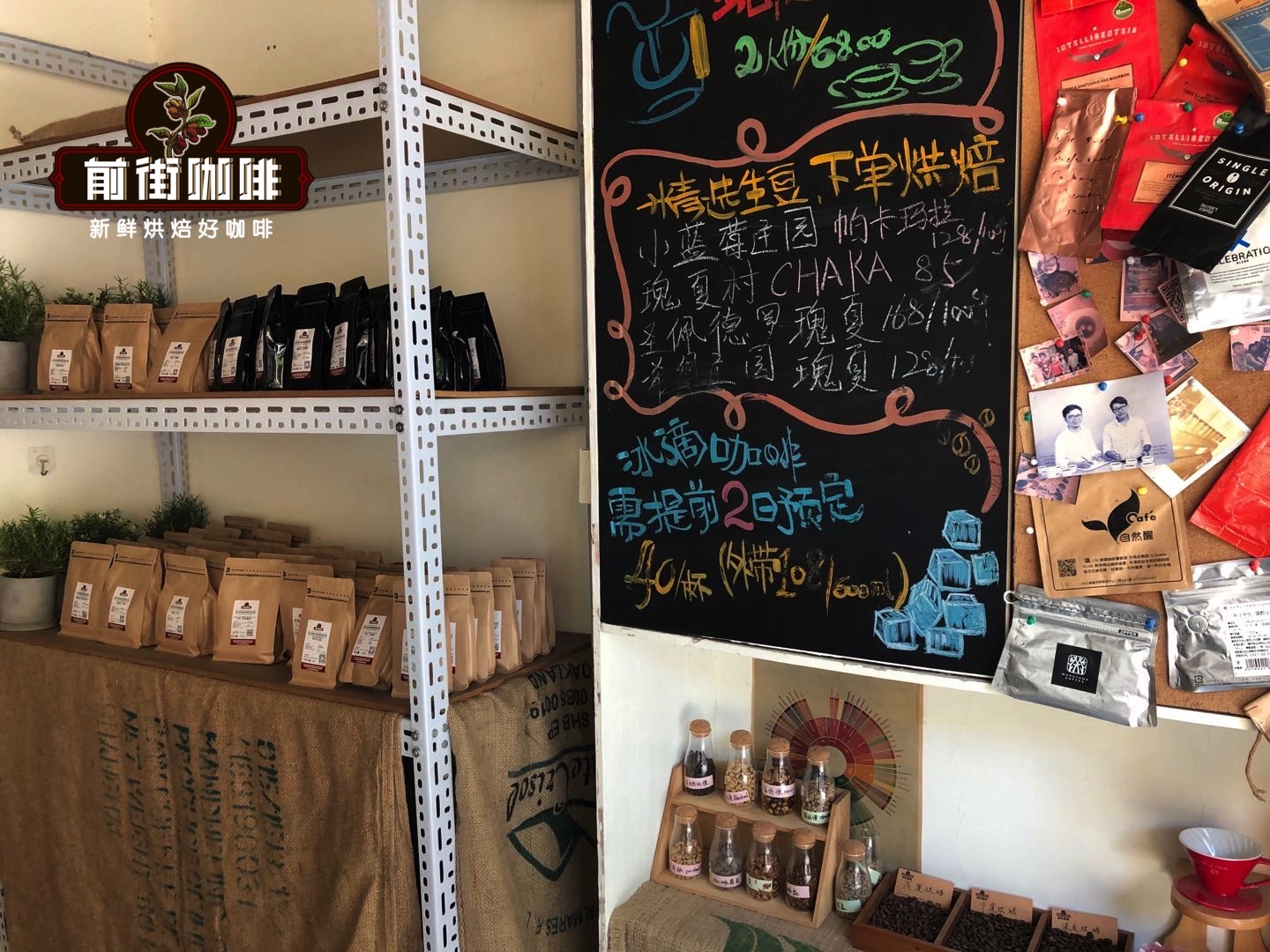
For those who have been to the Qianjie coffee shop, it is not difficult to find that the first row of beans on the list full of bean names on the front street is reserved for Africa. It is not because the front street is partial to Africa, but because there are so many beans in Africa, and the flavor of each producing country has its own characteristics, and the flavor of each producing area is slightly different.
Africa, located in the equatorial zone, is a well-known region among the coffee-producing countries in the world. Among them, the coffee of Ethiopia and Kenya is the most famous, these two producing countries are the pillars of African coffee, any collapse will cause inestimable losses to the African coffee industry, so the coffee of the two countries is also recognized by the global coffee industry, and has a large number of fans! Of course, Africa can't just rely on two countries, you need to know more!
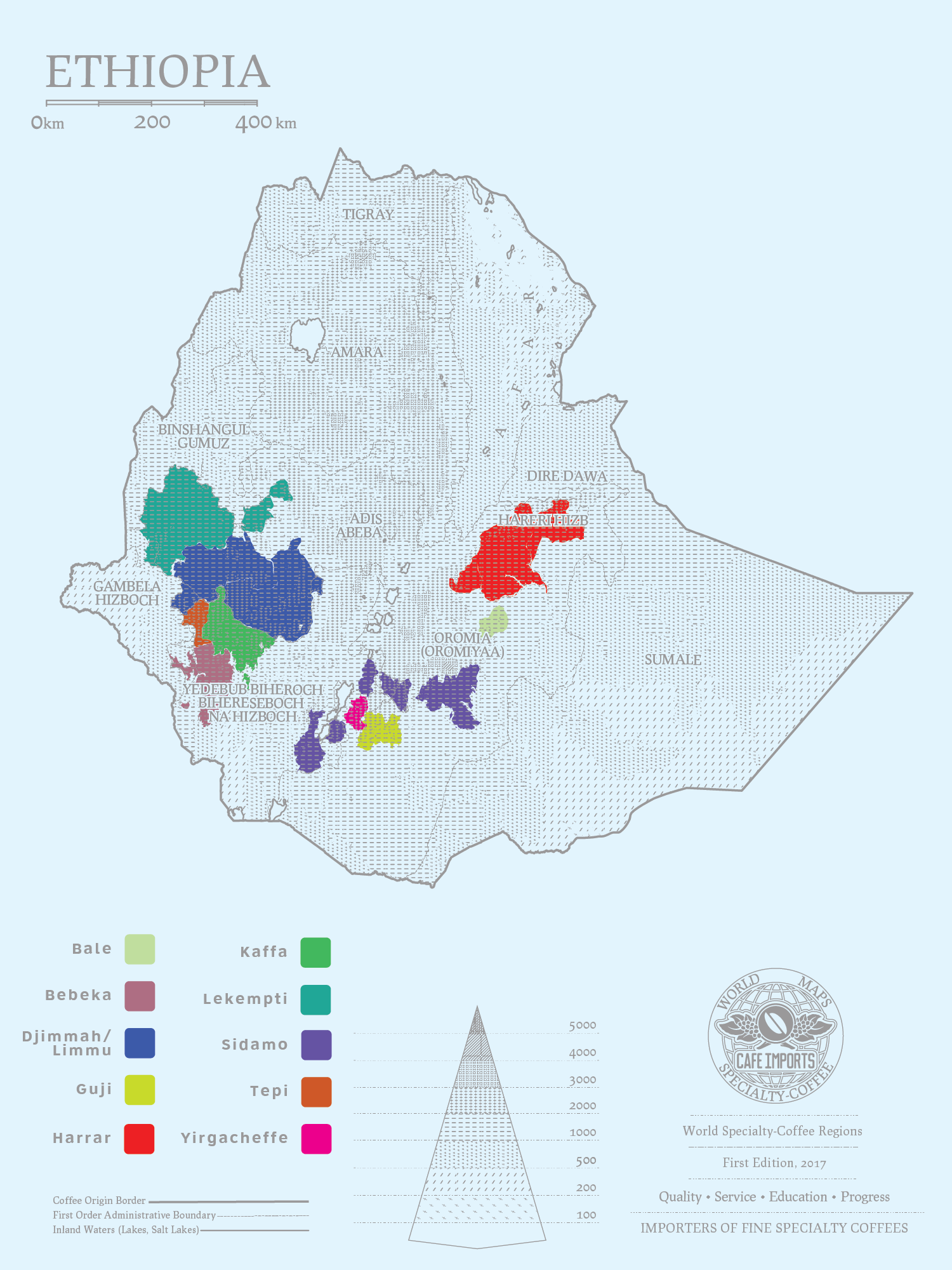
Many of the world's best African coffee beans come from Ethiopia and Kenya in the east to Rwanda, where high-quality Arabica beans are grown in West African countries, including Senegal and Cameroon, most of which grow Robusta beans. We will briefly cover some of the regions in this article: Ethiopia, Uganda, Kenya, Tanzania and Malawi. Although it is fair to say that coffee beans from Africa are widely grown throughout the continent and in many areas even wild.
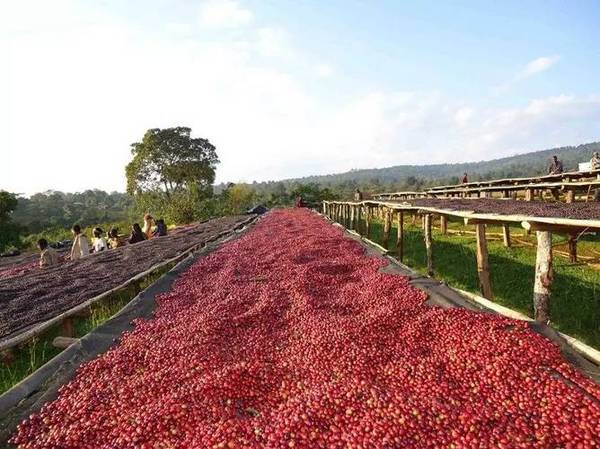
[flavor characteristics: charming fruit acid]
As the birthplace of coffee, African coffee plays an important role in the whole coffee industry. Although the commercial cultivation of coffee has been developed around the world for hundreds of years, the unknown wild coffee varieties in Africa are still the greatest treasure in the hearts of coffee researchers. African coffee is generally characterized by strong aroma and charming acidity, its sour brightness is lively and exhilarating, but the mellow African coffee is often slightly thin and the sweetness is not very prominent. African coffee due to drought and lack of water, mostly use the sun method to deal with raw beans, the bean shape is often uneven and beautiful, and the defect rate is high.
[Ethiopia]
Ethiopia has three main areas where African coffee beans are produced: Harrar,Ghimbi and Sidamo, or Yirgacheffe. Harald beans come from small farms and are processed by dry processing. They are marked "longberry" for large and "shortberry" for small or Mocha (their size is peaberry).
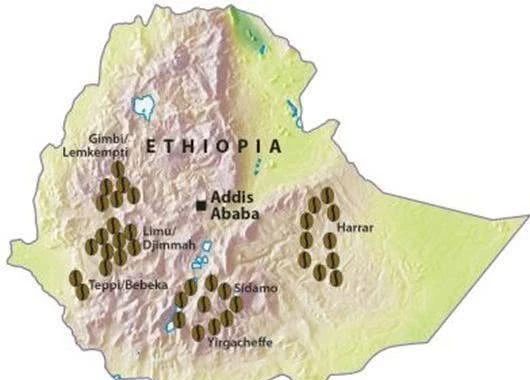
[Coffee cultivation in Ethiopia]
Due to the change of administrative division in Ethiopia around 1995, the biggest impact on coffee region is that the original Sidamo Province is divided into the new Sidama Sidama (a small part of the original), and most of it is included in Oromia State; Moreover, Yejia Shefi, which originally belonged to West Dharma Province, is now classified into the new Gedeo District. There will be a mixture of new and old regional names in the Ethiopian coffee products circulating in the market. Here, we take the new regional division as the benchmark and combine the administrative regions to understand the coffee planting map of Lower Ethiopia.
Coffee cultivation in Ethiopia is mainly in the western and southern regions, with smallholder families accounting for 90% of the total cultivation. Nearly 1.2 million smallholder families live on coffee cultivation. The planting area of each household is less than 4 hectares, the average planting altitude is 1000-2300 meters, the planting density is 1000-1800 coffee trees per hectare, and the output per hectare is nearly 600kg.
Coffee cultivation in Ethiopia is divided into:
● Forest coffee forest coffee (8-10%), coffee trees coexist with other crops in the original forest, without any artificial care, farmers will regularly pick coffee fruit
● Forest-semi-forest coffee (30-35%), coffee tree planting area is located around the forest and farmers 'living area, coffee tree and forest coffee are the same natural production varieties, farmers will manage coffee tree planting area and plant other cash crops.
● Garden coffee (50-55%), coffee trees are planted around farmers 'living areas, and most of them are coffee planted by farmers themselves.
Plantation coffee (5-6%), large private growers with more processing facilities and production capacity
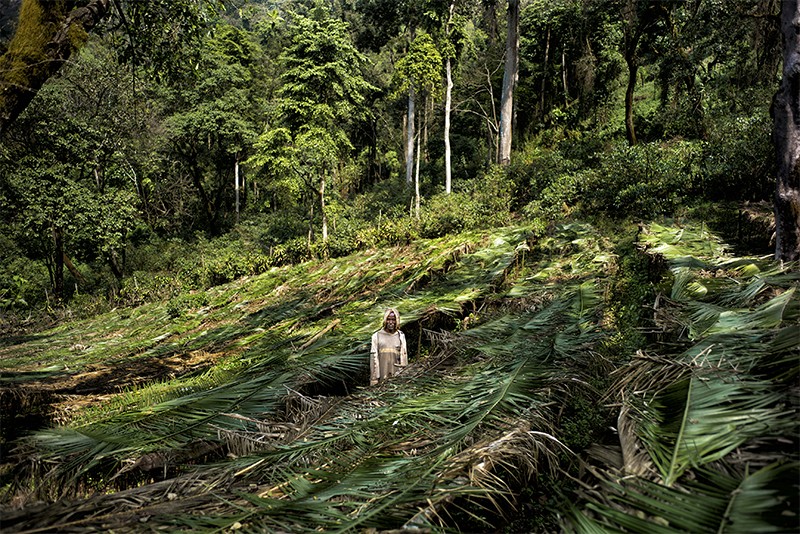
[Ethiopian Coffee varieties]
Nearly 2000 coffee varieties have been recorded in Ethiopia (including 1927 native varieties and 128 imported varieties).
Depending on the appearance, Esther's coffee variety is "Grand View Garden", which has everything, long, short, thin, fat.
[Ethiopian native species genealogy]
Long particles are found in all coffee growing areas in Ethiopia. From the actual proportion seen, there are more long particles in the western Jimma, including Limmu and Kaffa, and less in sidama or yirgacheffe.
Small granule species, the appearance is relatively round, the bean body is very small, mostly between 14-15 orders, this variety should be the most familiar to us. They can often be seen in sidama and yirgacheffe. I have also seen them in a harrar sample, and also in coffee beans sold locally by Jimma. Compared with other regions, sidama, yigracheffe and surrounding arsi, guji have more native varieties of these small grains.
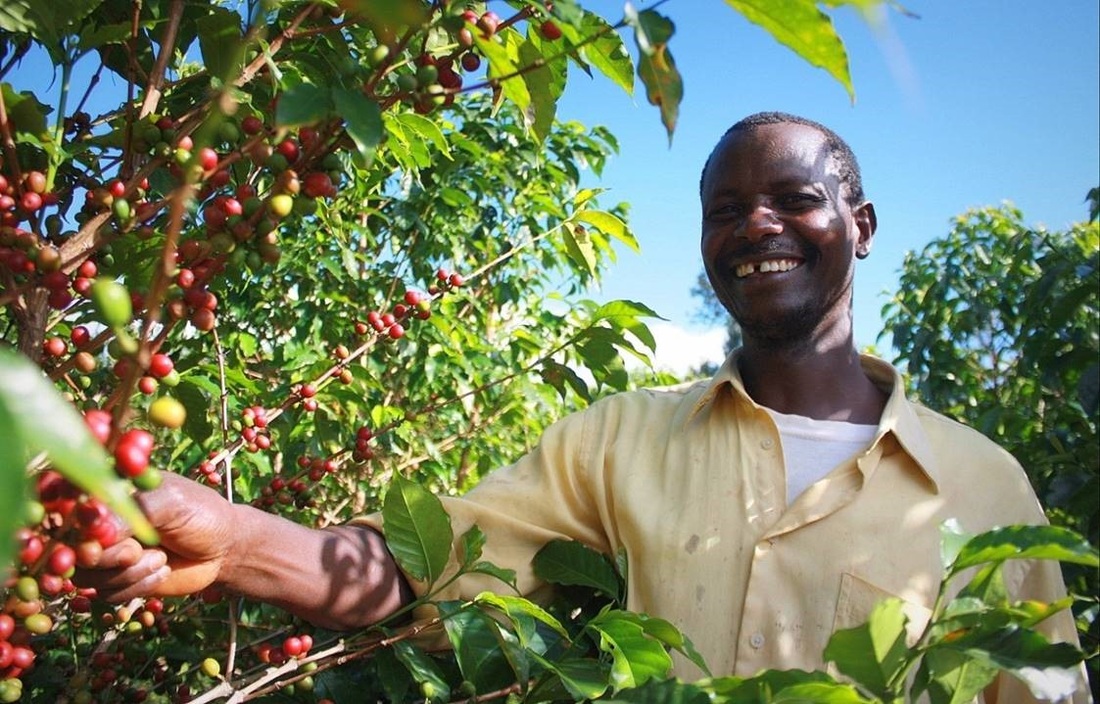
[handling method]
Essel's coffee is processed in the following ways:
● sun, sun is the most traditional treatment, Harrar area due to special drought, there is no water for washing, all produced for sun treatment, other areas of Sidama, Yirgacheffee, Guji,Jimma are also produced by the sun
● water washing has higher requirements for treatment equipment, water resources and treatment plant environment than solarization, but it can also produce high quality coffee stably. All producing areas except Harrar have water washing treatment.
● honey treatment, in the past two years, we have seen items marked as Kochere honey treatment on the market. Let's put a question mark here.
[flavor characteristics]
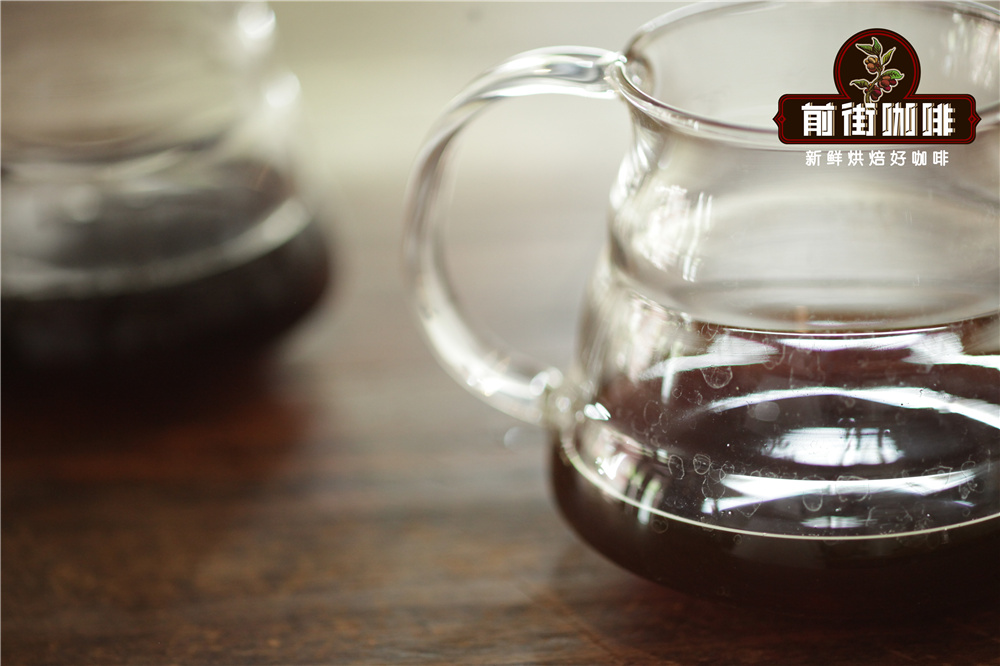
● washing, citrus fruits, similar to lemons, oranges, oranges, grapefruit, sweet pomelo, the flavor varies from the obvious aroma of citrus fruits (peel), to the acidity of different strengths, from soft small oranges to medium-strength oranges, to the more refreshing acidity of lemon and grapefruit.
● sun, ripe yellow, red, black fruit aromas, similar to apricots, peaches, cherries, strawberries, cranberries (dried), blueberries (dried), plums, etc., accompanied by varying degrees of wine aromas, such as rum, whisky, and even red wine (beaujolais)
[Ethiopian coffee grade]
The definition of the grade of Essex coffee is complicated.
Qianjie learned from consulting data that there is a department under the Ethiopian Ministry of Agriculture called Cupping and Liquoring Unit CLU, which is responsible for the quality approval of exported coffee, which includes the very important responsibility of grade definition; CLU existed before ECX.
Before the advent of ECX, for washed coffee, the export grade was G1 and G2; for sun-cured coffee, the export level was G3, G4, G4, G5, which means that the highest level of sun exposure was G3.
After the emergence of ECX, there is a redefinition of classification, and there is no difference in the classification name of washing, while the definition of sunlight appears for the first time G1, which is why Esser's sunburn is G1 and G2, while G3 begins to decrease slowly.
The Ethiopian coffee that can be bought in Qianjie belongs to the G1 grade.
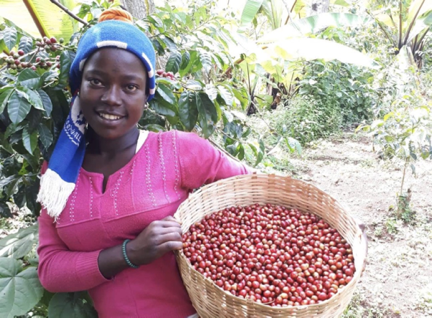
[nine boutique producing areas in Ethiopia]
Yejia Xuefei (boutique producing area): 1800m-2000m above sea level | Pastoral coffee system |
Yega Xuefei is affiliated to the Sidamo producing area, which is separated separately because of its unique flavor. In addition to the small town of Yega Xuefei, it also includes three by-product areas around Wenago, Kochere, Gelena and Abaya. Therefore, Yirgacheffe A, Wenago A, Kochere An and Gelena/AbayaA will be more expensive than B of the same name in the new Yega Sheffield rating system. In addition to washing and insolation, beans with special treatment have begun to appear in today's Yega Xuefei producing area. In the Qianjie coffee rations series, there is a washed Yega bean, which tastes clean, has a strong fragrance of white flowers, and has such a sweet aftertaste that even the baristas of Qianjie Coffee love it.
Sidamo (boutique producing area): 1400-2200m above sea level | Pastoral Coffee system |
The flavor is similar to Yega Xuefei, exquisite washing or sun-drying Sidamo, the same fragrance of flowers and oranges, the price is as good as Yega Xuefei. The varieties in the two producing areas are similar, with medium-sized beans but also small seeds of dwarf plants, which farmers often sell separately. Common Kurmie, poor disease resistance; Wolisho; tall and strong; Deiga, medium tree shape, these three species are the main force of the boutique tanning series Beloya and Aretha. Qianjie Huakui is produced in the Sidamo producing area. In addition to the obvious fragrance of flowers, it also has the wild sour berry aroma of the Sidamo producing area, which is very popular with friends.
Liam (boutique producing area): 1200m to 2000m above sea level | Coffee system in pastoral, forest, semi-forest and planting fields |
The output is relatively small, and it is mainly exported to Europe and the United States, but it is not easy to buy in Taiwan, but it is very popular in Europe and the United States. there are three treatment methods: washing, tanning and semi-washing. Liam's body will be significantly less viscous, and the floral and citrus flavors will be inferior to those of Yegashifi and Sidamo, but with a hint of grass and black sugar, and bright acidity.
Hara (boutique producing area): 1500-2400 m above sea level | Pastoral coffee system |
Hara exclusive sun, is an ancient city in the east, but the city does not grow coffee, the so-called Hara coffee refers to the coffee produced by Haraji high and low in the Great Hara area. As the annual rainfall is only 1000 mm, all of them are treated in the sun. Hala caffeine is famous for its special aroma, which is typical of the early morning flavor in ancient times. she is tied with Yegashifi [double star].
If Hara's defective beans can be picked out, it is easy to drink berry aromas with slightly pleasant fermented aromas. However, due to various factors, the quality of Hara coffee is unstable in recent years, and the grading system is not true, so you must test or try it when you buy it.
Jinma (bulk commercial bean producing area): 1350-1850 m above sea level | Forest / semi-forest system |
Jinma is the capital of Kafa Forest or Kafa province. The English spelling is very messy. Most of the maps are jimma, but the coffee sacks are spelled into Djimmah. This is the largest coffee producing area in Ethiopia, accounting for 1 per cent of exports.
Kafa Forest is famous for its primitive wild varieties. Jinma is the distribution center of Kafa in this area. Farmers are used to picking and transporting the forest to Jinma, and then mixing hundreds of varieties together to sell as commercial beans, resulting in the aroma of many delicious varieties being masked.
Water washing boutique Jinma, although there is no Yega Xuefei orange fragrance and flower rhyme, the taste spectrum is also quite clean, similar to the Central American boutique. Commercial-grade boutique Jinma is very common in Taiwan, and luckily you can buy high-quality and inexpensive Jinma, which can drink the fragrance of lemon peel, which is not inferior to that of Sidamo. Overall, Jinma has a better flavor than Brazil's bulk commercial bean Santos, making it a good medium-to-low-priced formula bean.
Yilu Babo (bulk commercial bean producing area): altitude 1350-1850 | Forest / semi-forest coffee system |
This area is located in the west of Ethiopia, bordering Sudan, and is the most convenient producing area in the west. the complexity of coffee gene is only second to that of Kafa forest, beans are obviously larger than those of Yegashifi and Sidamo, low acidity, good viscosity and balanced flavor. Most of the coffee here is transported to Jinma to be mixed, rarely sold independently.
Jinbi, Liechuti (major commercial bean producing areas): 1500-1800 above sea level | Forest / semi-forest coffee system |
There are sun-washed and water-washed beans in this area, long-bodied beans similar to Hara, and a few boutique grades are quite popular in Europe and the United States. Most of the Hara, known as the poor, has a sour and fruity flavor due to Yilu Babo, with a bright flavor.
Tiebi, Bebeca (bulk commercial bean producing area): 500-1900m above sea level | Pastoral / forest / semi-forest coffee system |
The two producing areas are very close. Tiebi has an enterprise-managed coffee plantation in the north of Bebeca. In recent years, it has promoted the pastoral system and increased farmers' income, with an annual output of about 3000 tons. Both places have wild coffee, the yield is not high, the flavor is very different from Hara and Yega snow coffee, low acidity is the biggest feature, suitable for formula beans, sun and water washing.
Tana Lake (alternative production areas): 1840 meters above sea level | Forest system |
Monastery coffee, the annual output of the surrounding forest coffee is very small, less than 10 tons, in fact, can not be called the producing area, the lake area is full of Orthodox monasteries, churches, religious murals and myths, creating the most "divine" coffee in the world.
European monastic academics opened up a local coffee growing industry, which was later run by coffee communities or cooperatives in villages around the town. There are no special plantations here, and coffee trees are naturally scattered in the forest and countryside. During the harvest season, the Ethiopian Coffee Trading Company goes to town to buy coffee beans collected by farmers.
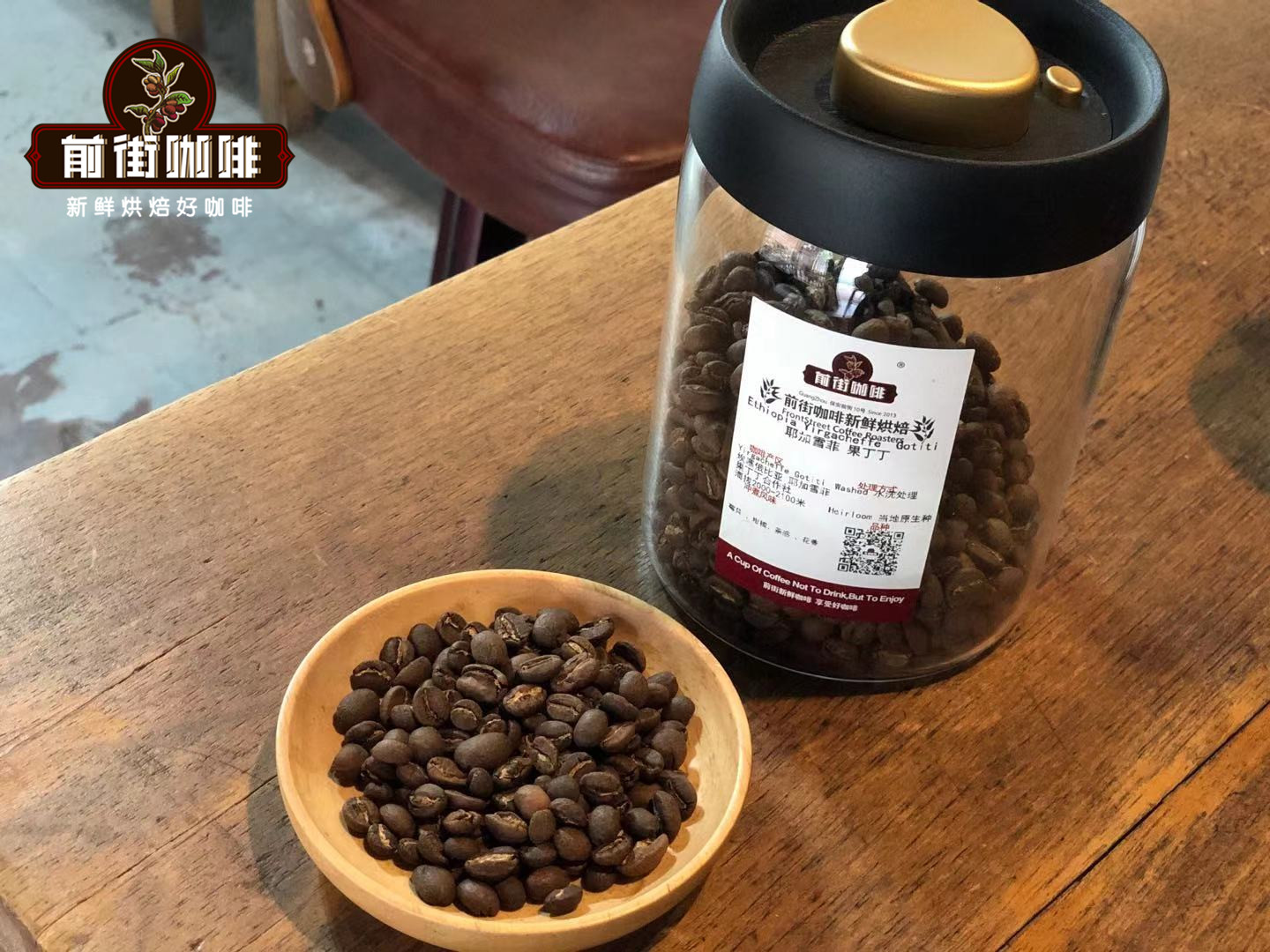
Representative coffee:
Front Street Coffee Yega Sheffield Ding Ding Coffee beans
Producing area: Yega Xuefei, Ethiopia
Cooperative: Guoding Dingding Cooperative
Altitude: 2000m--2100m
Variety: native species
Treatment method: washing treatment
Baking suggestion
This bean is more suitable for shallow baking, which will highlight its clean taste, bright acidity and obvious return to sweet taste.
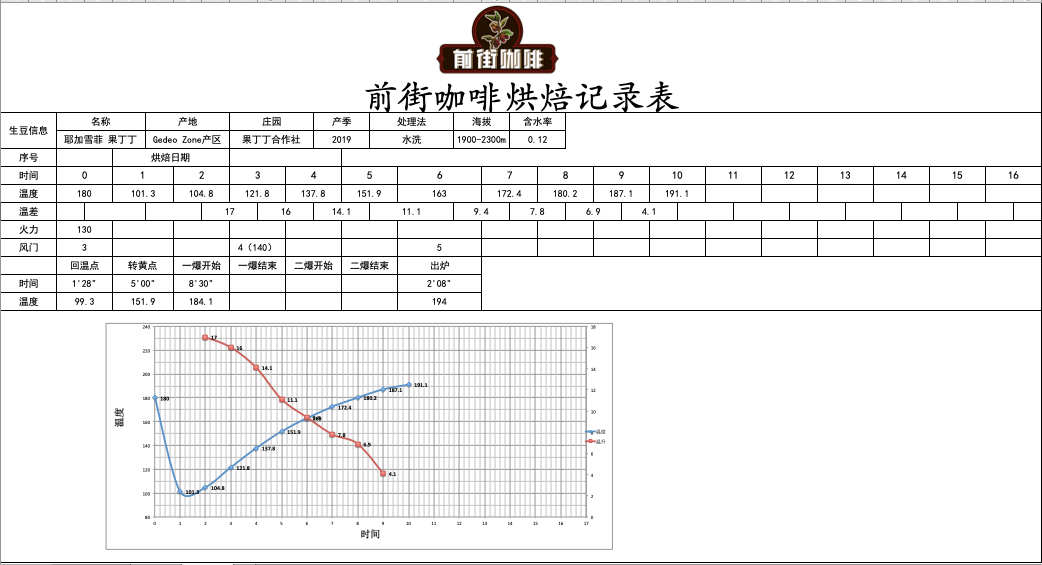
Machine: roaster Yang family 800N
Input bean temperature: 180 ℃
Yellowing point: 5 years old 39 percent 00 ", 149.9 ℃
Flashpoint: 8 hours, 39 percent 42 ", 183.8 ℃
After an explosion, the development of 1mm 39% 48 ", 193.5 ℃ came out.
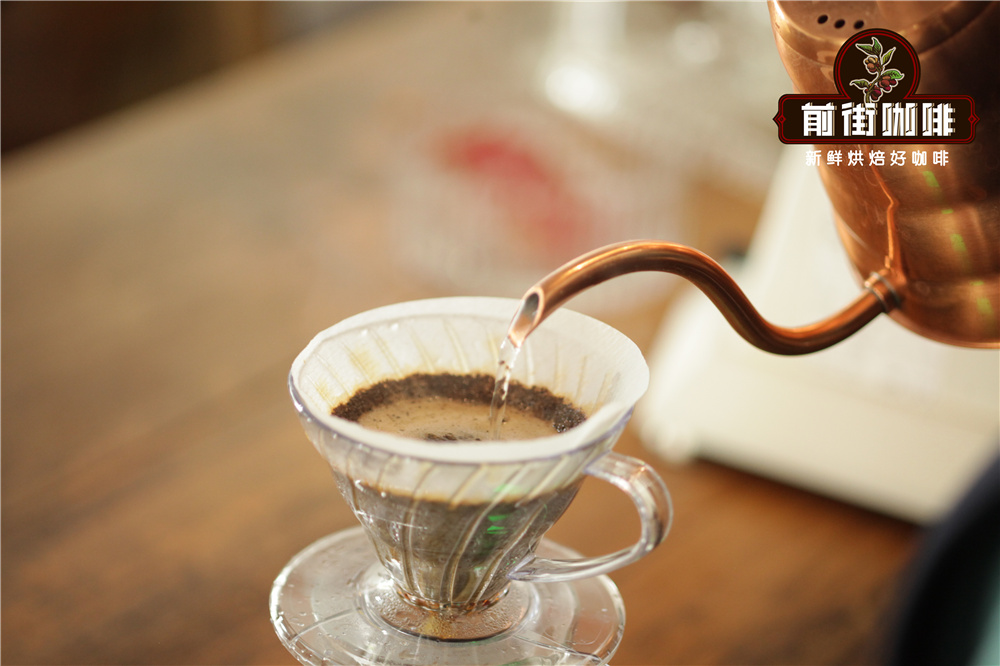
Cooking suggestion
Filter cup: Hario V60
Water temperature: 90 ℃
Powder / water ratio: 1:15
Degree of grinding: medium and fine grinding
Steam with 30 grams of water for 30 seconds, small water flow around the circle to 125 grams for sectional injection, water level drop is about to expose the powder bed, continue to inject water to 225 grams to stop injection, and so on when the water level drop is about to expose the powder bed, remove the filter cup, (steaming starts timing) the extraction time is 2 minutes 39 percent 00 ".
Flavor description
The entrance has citrus, black tea, with the change of temperature, cream, caramel, almond aftertaste is obvious and taste clean and sweet.
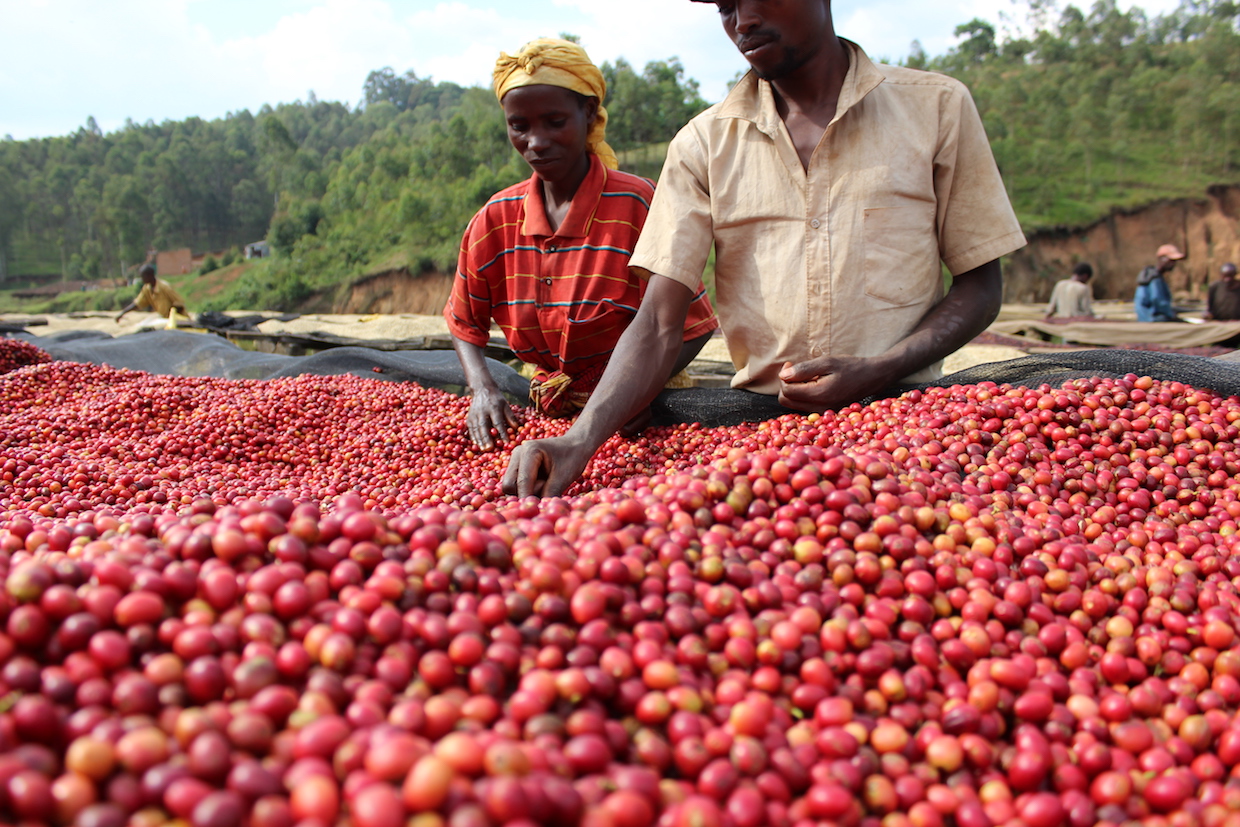
[Burundi]
The Republic of Burundi is located south of the equator in east-central Africa. It is bordered by Rwanda to the north, Tanzania to the east and south, Congo (Kinshasa) to the west, and Lake Tanganyika to the southwest. There are many plateaus and mountains in the territory, most of which are composed of the plateau on the east side of the East African Rift Valley, with an average elevation of 1600 meters above sea level, which is known as the "mountain country". There are many mountains in Burundi, and the suitable elevation and climate are very suitable for coffee cultivation. Qianjie Coffee found through the map that the title of "Heart of Africa" is not a false name, its territory is like a heart.
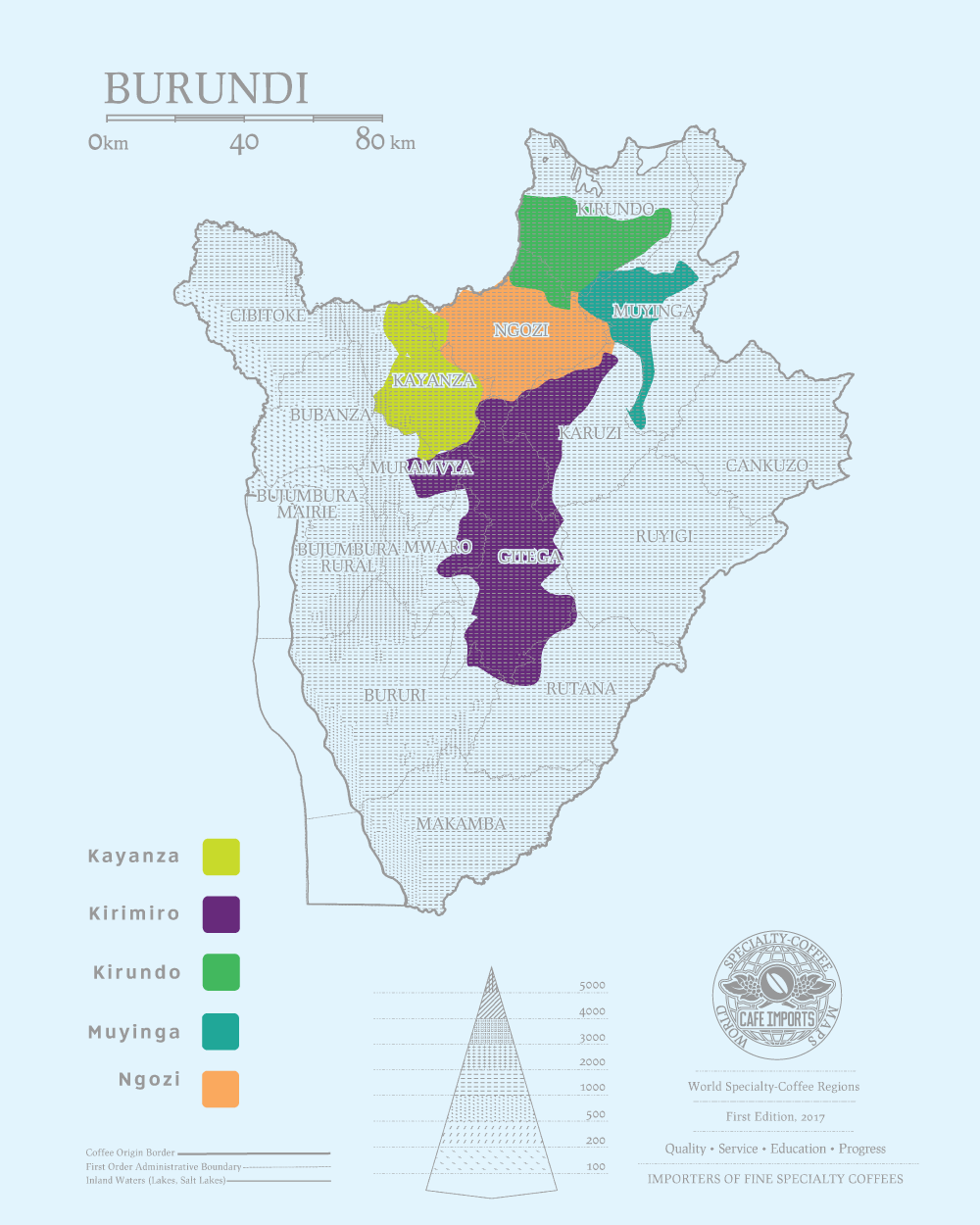
Burundian coffee beans are mainly produced by a large number of small coffee farmers and are mostly concentrated around domestic processing plants. Wet treatment plants that do not use production areas will also have their own management integration units (referred to as SOGESTAL), which is basically the wet treatment plant management association. The main function of the association is to provide better hardware equipment in the region, thus contributing to the improvement of the quality of Burundian coffee in recent years. The best coffee in Burundi is washed and mostly belongs to bourbon.
Burundi has the most diverse and successful coffee industry in the world, and has its own characteristics. Coffee in this country was introduced by Belgian colonists in 1930 and is now grown only on small farms. Unfortunately, many of these farms are on the border with war-torn Rwanda, putting pressure on coffee production. Almost all coffee produced in Burundi is Arabian coffee beans, while coffee trees in Ngozi are planted at an altitude of more than 1200 meters. Burundian coffee has a rich aroma and excellent acidity, and most of its products are exported to the United States, Germany, Finland and Japan.
Burundian coffee bears a striking resemblance to neighboring Rwanda, where coffee from the two countries is often confused. Burundian coffee is mainly grown in bourbon, using traditional washing treatment to process coffee cherries. Its boutique coffee is characterized by elegant sweetness and bright citrus aromas.
Representative coffee: [Burundian Heart of Africa]
Degree of grinding: medium and fine grinding
Filter cup: hario v60
Water temperature: 90 degrees
Gouache ratio: 1:15
Cooking suggestion
Steam with 30 grams of water for 30 seconds, small water flow around the circle to 125 grams for sectional injection, water level drop is about to expose the powder bed, continue to inject water to 225 grams to stop injection, and so on when the water level drop is about to expose the powder bed, remove the filter cup, (steaming starts timing) the extraction time is 2 minutes 39 percent 00 ".
Flavor description: fresh aromas of kumquat and lemon, slightly sweet aromas of caramel and Brin also fill the whole cup of coffee, the fermented acid washed is very bright.
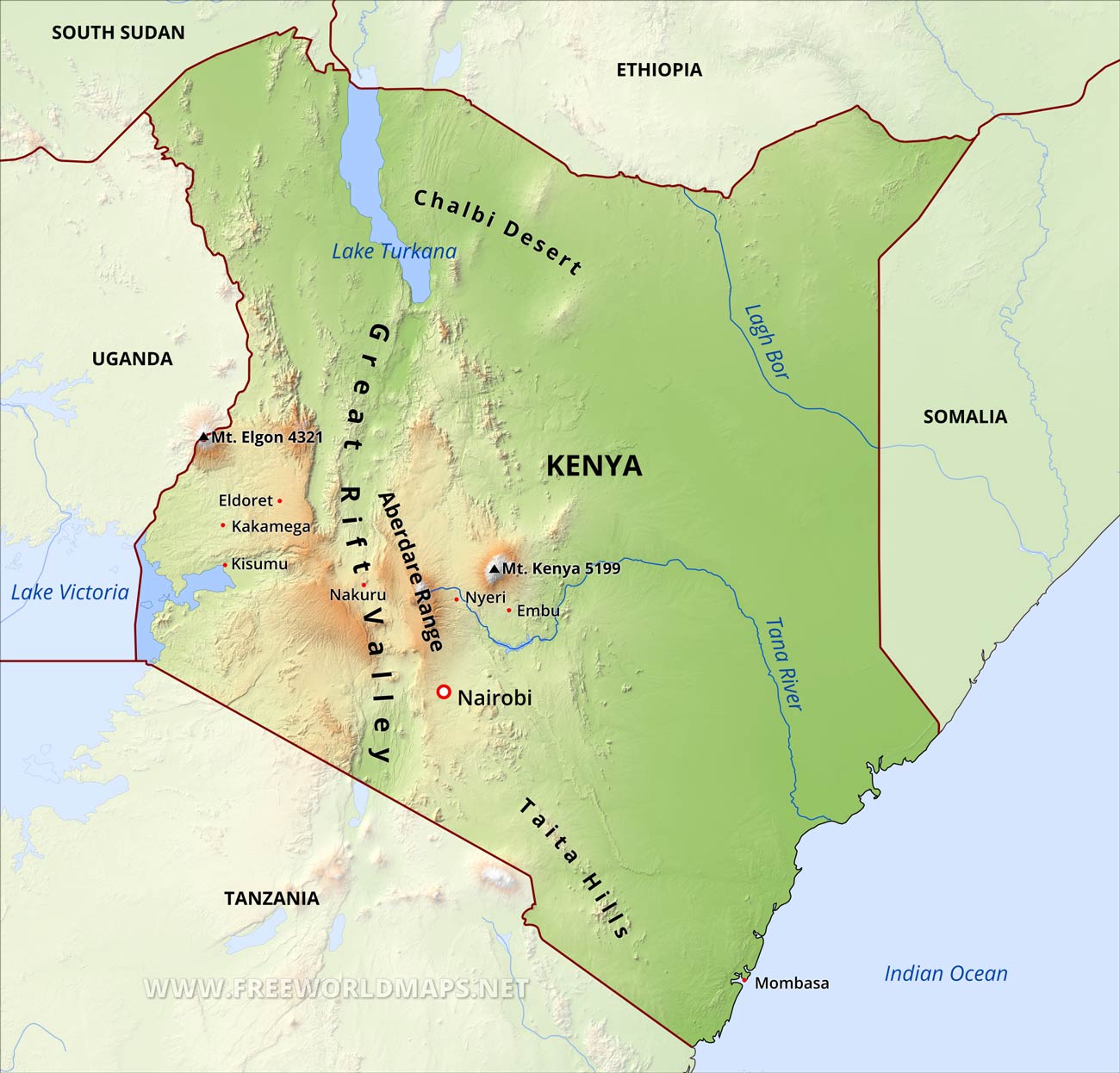
[Kenya: small cooperatives]
Kenyan coffee has obvious acidity, sweetness and dry wine aftertaste. The best of them is the taste and aroma of blackcurrant. The auction was held in Nairobi every Tuesday during the harvest season, leading to a price war for the best crops. In recent years, the price of raw beans of Kenyan coffee is high, and it is easy to step on thunder, while the roasters and baristas in front street sometimes work overtime to roast and test the newly arrived Kenyan coffee. in order to show everyone a cup of sour and beautiful Kenyan coffee.
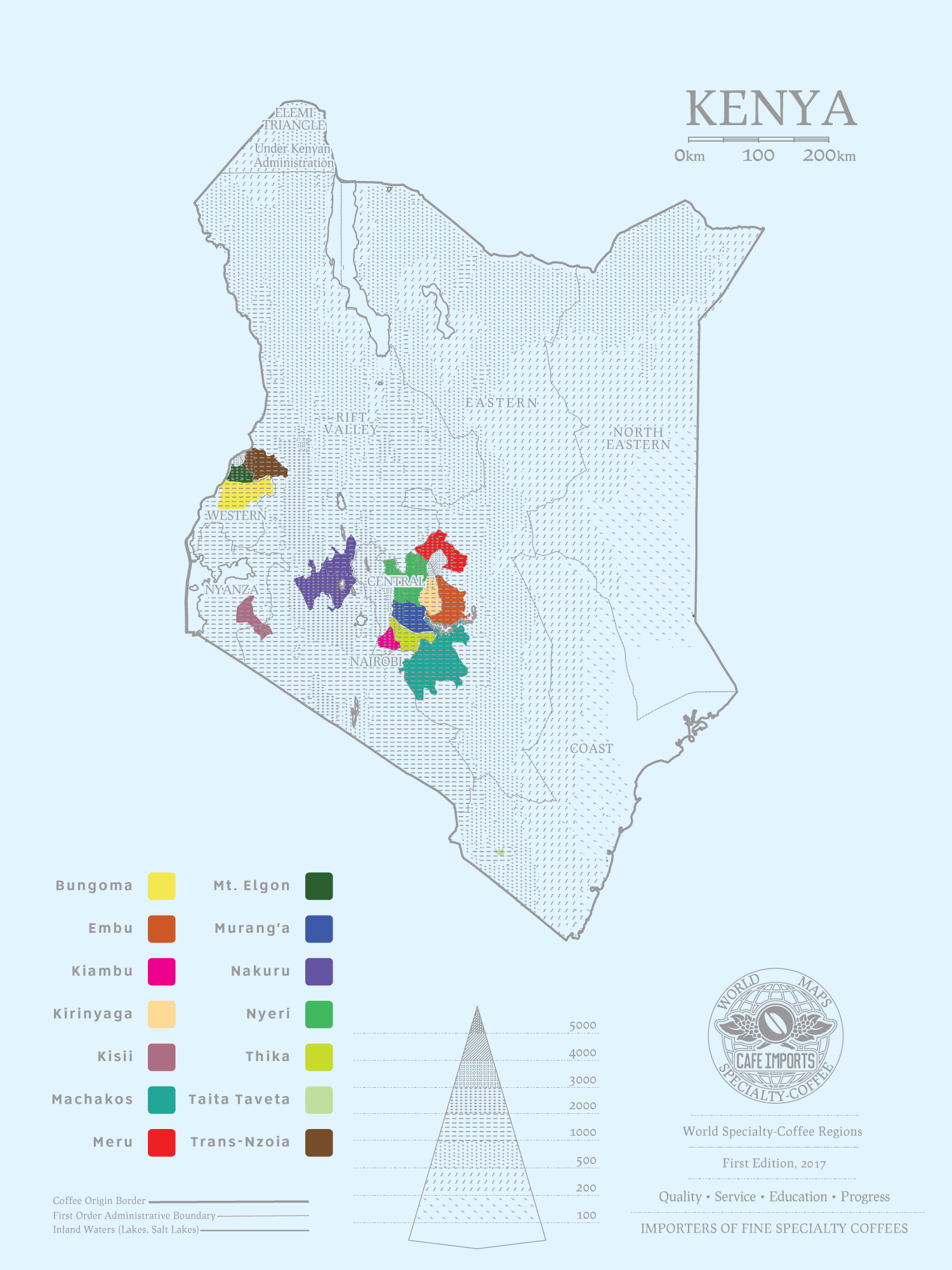
[Kenya 6]
Xin 'an Bu and Miao Lang
Most people love the bright acid and thick touch here, plus it is not far from Nairobi, there will be many foreign buyers visiting during the production season.
Niyeli
Bright blackberries and thick oils, with citrus and even floral aromas, the beans here are also a big part of Kenya's international reputation.
Chilin!
The flavor here is also bright fruit acid, with a medium oily feel and a delicate sweetness.
Ambu District
The flavor here is not as strong as Niel, balanced and clear, and the finish is mostly good.
Machacos District
This area is a latecomer, known for its clear acidity and delicate flavor, medium touch and delicate fresh finish, attracting many buyers in recent years.
Western Region
The flavor is very different from that of the central regions, attracting buyers with medium thick sweetness and mild flavor. Some washing fields in this area rely on hazelnut and mild fruit wind, and are also widely used by buyers who do not like bright acidity.
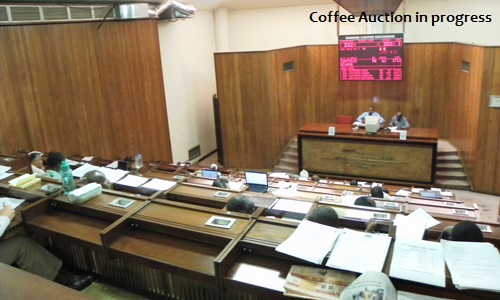
Most of them are produced by small cooperatives rather than large estates, wet treated and graded according to the size of beans. Kenyan coffee is acidic (with distinct aromas) and makes the taste brighter. Depending on which farm it comes from, it has berry or citrus flavors, sometimes alternating with spices. Some are bright and clean, while others have a wine-like taste.
Kenya has produced a disease-resistant hybrid called Ruiru 11, but it lacks some of the best flavor features of traditional coffee and is considered low-grade. They are still developing the beans, hoping to taste as good as natural crops.
Malawi is a small country in southeastern Africa between Mozambique and Zambia. Its coffee taste is smooth and full, and it is a real taste. It rarely reaches the Western Hemisphere, so if you see something, you should seize the opportunity to taste it. You will find that the style of East Africa is softer, more floral, sweet, delicate and bright.
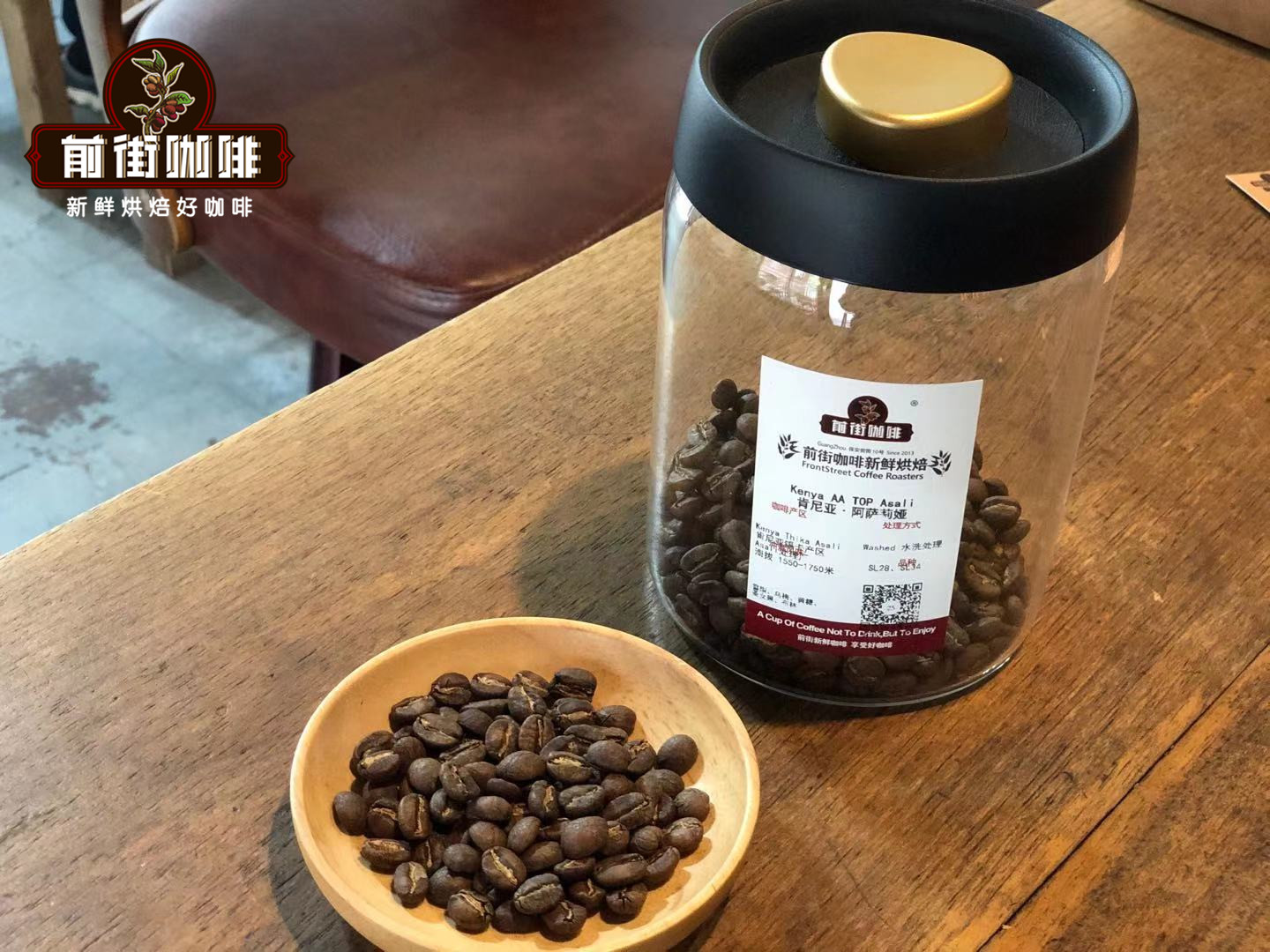
Recommended coffee:
[Front Street Coffee Kenya Asalia]
Production area: Sika, Kenya
Treatment plant: Asali Honey Treatment Plant
Altitude: 1550m--1750m
Varieties: SL28, SL34
Treatment: K72 treatment
brew parameters
Recommended way: filter cup v60
Water temperature: 90-91 degrees
Powder: 15g
Powder water ratio: 1:15
Grinding: Medium fine grinding
Brewing technique
Steaming with 30g water for 30s, injecting water in a circle to 125g with small water flow, stopping injecting water to 225g when the water level drops and exposing the powder bed, removing the filter cup when the water level drops and exposing the powder bed, and extracting for 200 ".
Flavor Description: Wet aromas with ripe tomato and floral, cherry and plum flavors on the palate, bright acidity, clean taste, medium body, prominent sweet mid-range, juicy, fruity and sweet yellow sugar aftertaste, and green tea aromas.
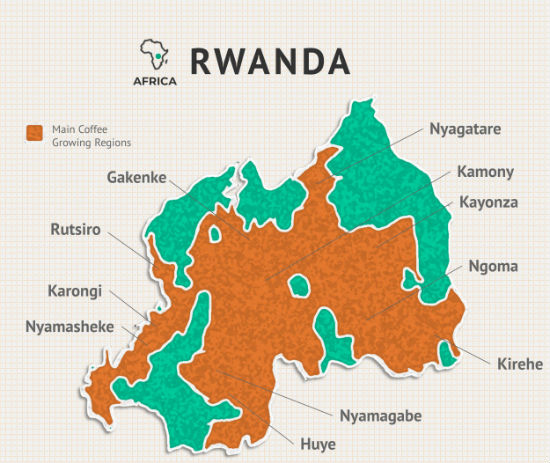
[Rwanda: a land of thousands of hills]
Republika (Rwanda) is a country in east-central Africa, the full name of which is the Republic of Rwanda. It is located on the south side of the equator in east-central Africa and is a landlocked country. It is bordered by Tanzania to the east, Burundi to the south, the Democratic Republic of the Congo to the west and northwest, and Uganda to the north, with a land area of 26338 square kilometers. Most areas belong to tropical plateau climate and savanna climate, mild and cool, with an annual average temperature of 18 ℃. The whole year is divided into two dry seasons and two rainy seasons, with a heavy rainy season from March to May and a light rainy season from October to December, with an average annual precipitation of 1000mm to 1400mm. The area is 26338 square kilometers.
Coffee and Geography in Rwanda
Many mountainous plateaus in the territory, a total of more than 1800 large and small mountains, known as "the country of a thousand hills". The east has many hills, swamps, lakes, water networks and vast natural pastures; the middle is the lowland along the lake; and the northwest is a mountain composed of a group of volcanoes. Rwanda is closest to the equator, but drowns more than 1500 meters above sea level, and the annual average temperature is only 18% C. coupled with abundant rainfall, suitable hydrothermal conditions and picturesque scenery, it is known as "the land of everspring" and "Africa Switzerland".
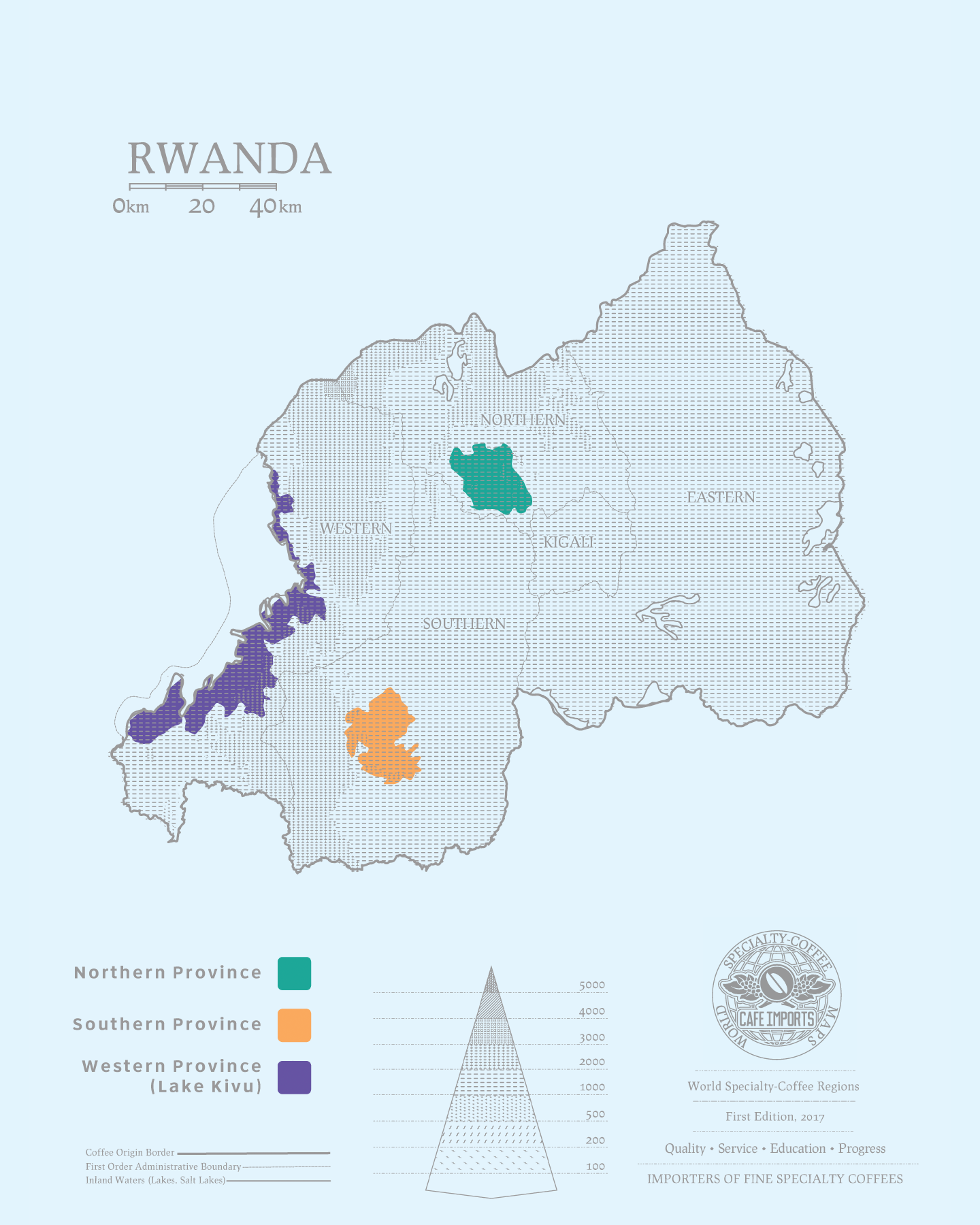
The beautiful country of thousands of hills Rwanda has a long and rich culture for growing highland coffee, mainly high-quality Arabica coffee. Rwanda accounts for 20% of the total coffee production and is also very popular in the international market. In this unique growing environment, high-quality coffee from Rwanda has a distinctive taste and aroma. Because of these distinctive flavors, Qianjie bought a bean from Rwanda, hoping to taste it with you.
Kaluritwa, marketing and promotion officer of the Rwanda Coffee Association, said a few days ago that Rwanda plans to export 3000 tons of coffee this year, further increasing coffee production to meet the increasing market demand. Starbucks, the world's largest coffee and beverage retailer, has also partnered with the Rwandan government to import Rwanda coffee, just as a brown pigeon flies from its cup against the line "Cup of Hope".
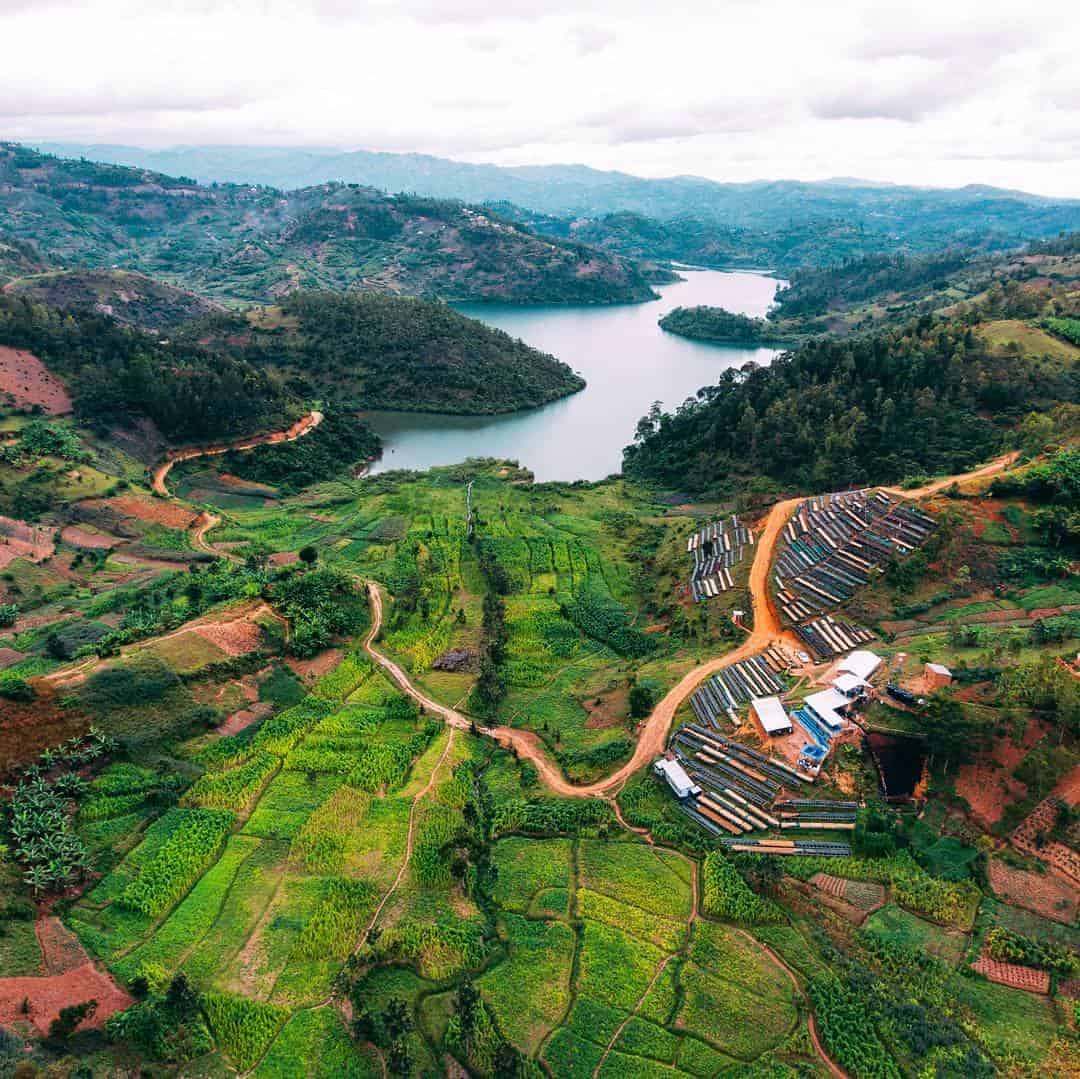
The taste of Rwandan coffee is described as "grass aroma" with tropical climate characteristics. Coffee beans from Rwanda have been tested on the front street and found that in addition to the sweet fruit taste of this coffee, it can also give people a feeling of freshness, clearness and freshness. Bourbon coffee grown in Rwanda is amazing for its sweet fruit, full-bodied, unrestrained and lingering aftertaste. This coffee has a delicious, citrus sweetness and a deep chocolate color, with red apples, cherries, cinnamon and honey, high sweetness and balance, cinnamon, almonds and chocolate finish.
Representative coffee:
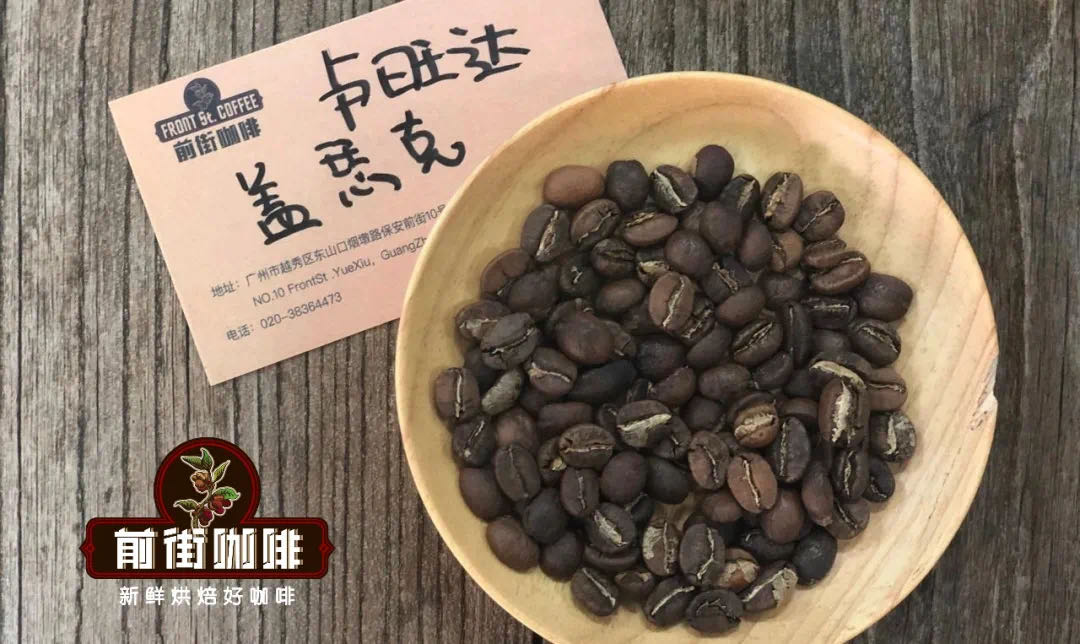
[Qianjie Coffee Gesak, Rwanda]
Producing area: Nimashek producing area in western Rwanda
Altitude: 1500m
Variety: bourbon
Treatment method: washing treatment
Degree of grinding: medium and fine grinding
Filter cup: hario v60
Water temperature: 90 degrees
Gouache ratio: 1:15
Cooking suggestion
Steam with 30 grams of water for 30 seconds, small water flow around the circle to 125 grams for sectional injection, water level drop is about to expose the powder bed, continue to inject water to 225 grams to stop injection, and so on when the water level drop is about to expose the powder bed, remove the filter cup, (steaming starts timing) the extraction time is 2 minutes 39 percent 00 ".
Flavor description: Virgin fruit, nut, cocoa sweetness, mint.
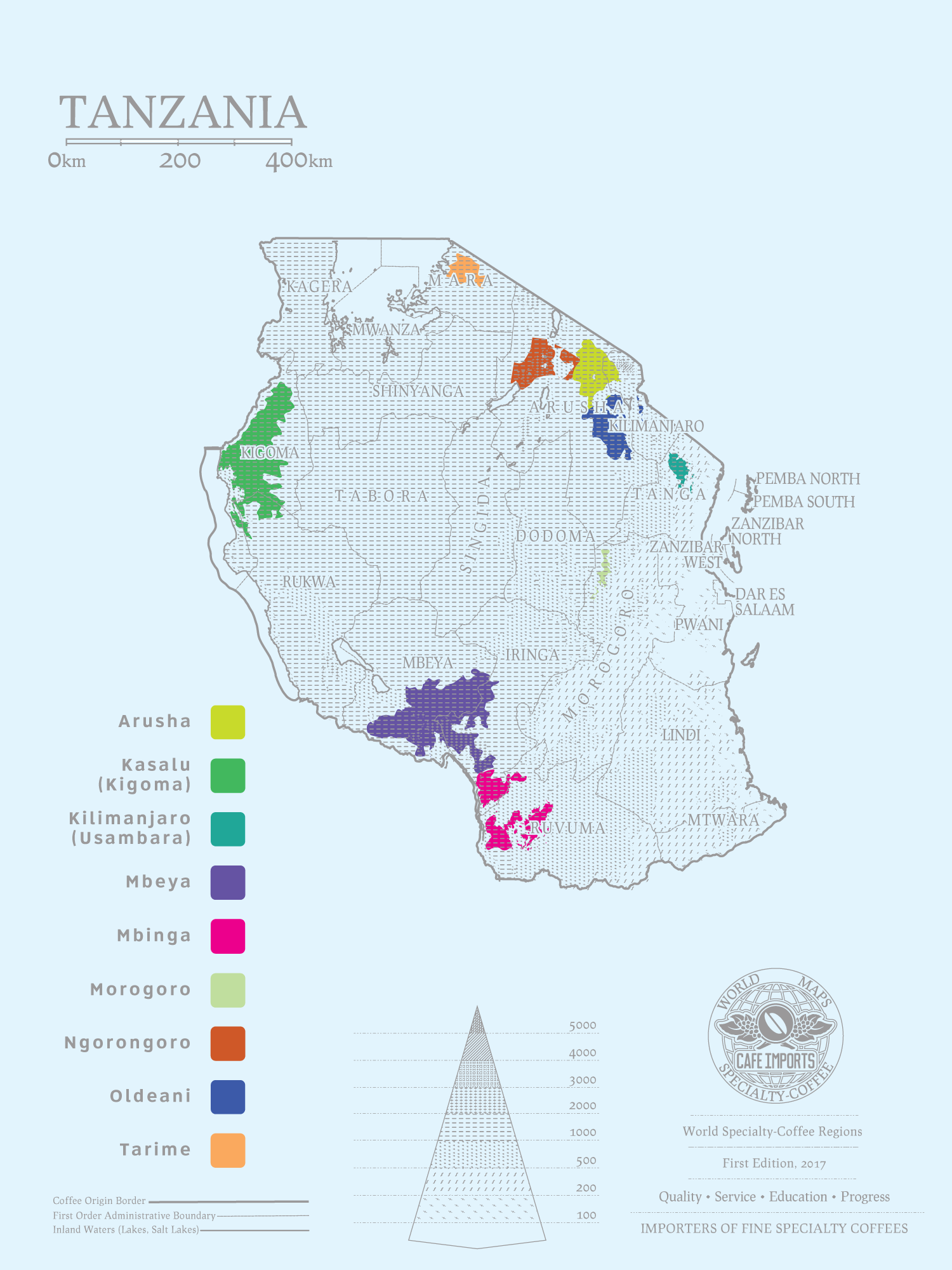
[Tanzania]
Tanzania is the birthplace of ancient humans in Tanzania. BC with Arab, Persian and Indian trade with the full name of Tanzania: United Republic of Tanzania (English: The United Republic of Tanzania). Located in eastern Africa, south of the equator. A member of the Commonwealth. It is bordered by Kenya and Uganda to the north, Zambia, Malawi and Mozambique to the south, Rwanda, Burundi and the Democratic Republic of the Congo to the west, and the Indian Ocean to the east. There is also a bean from Tanzania on the bean list of Qianjie coffee.
Tanzania covers an area of 945087 square kilometers, of which Zanzibar is 2657 square kilometers. It consists of the mainland, Zanzibar and more than 20 small islands. Located in eastern Africa and south of the equator, the continent is bounded by the Indian Ocean to the east, Zambia, Malawi and Mozambique to the south, Rwanda, Burundi and the Democratic Republic of the Congo to the west, and Kenya and Uganda to the north. The coastline of the mainland is 840 kilometers long. The topography of Tanzania is high in the northwest and low in the southeast, showing a ladder shape. The eastern coast is a lowland, the western inland plateau accounts for more than half of the total inland area, and the East African Rift Valley runs from east to west from Lake Malawi to the north and south. The Kibo peak of Mount Kilimanjaro in the northeast is 5895 meters above sea level, which is the highest peak in Africa.
Unlike most African countries, coffee bags in Tanzania are not common jute bags, but rough fiber bags made from tequila leaves because the local government banned the use of jute bags to protect Tanzania's sisal industry.
| | planting variety |
It is reported that the most common varieties of coffee grown in Tanzania are bourbon, tin pickup and Kent.
Bourbon (Bourbon)
Generally speaking, when we talk about bourbon species, we mostly mean red bourbon. Because after the red bourbon general coffee tree blossoms and bears fruit, the color change of the coffee fruit is: green > turn yellowish > turn slightly orange > turn mature red > turn more ripe dark red, so some people also say that [red bourbon] is planted in the bourbon at high altitude. it usually has a better aroma, while the acid is brighter, and it even tastes like red wine.
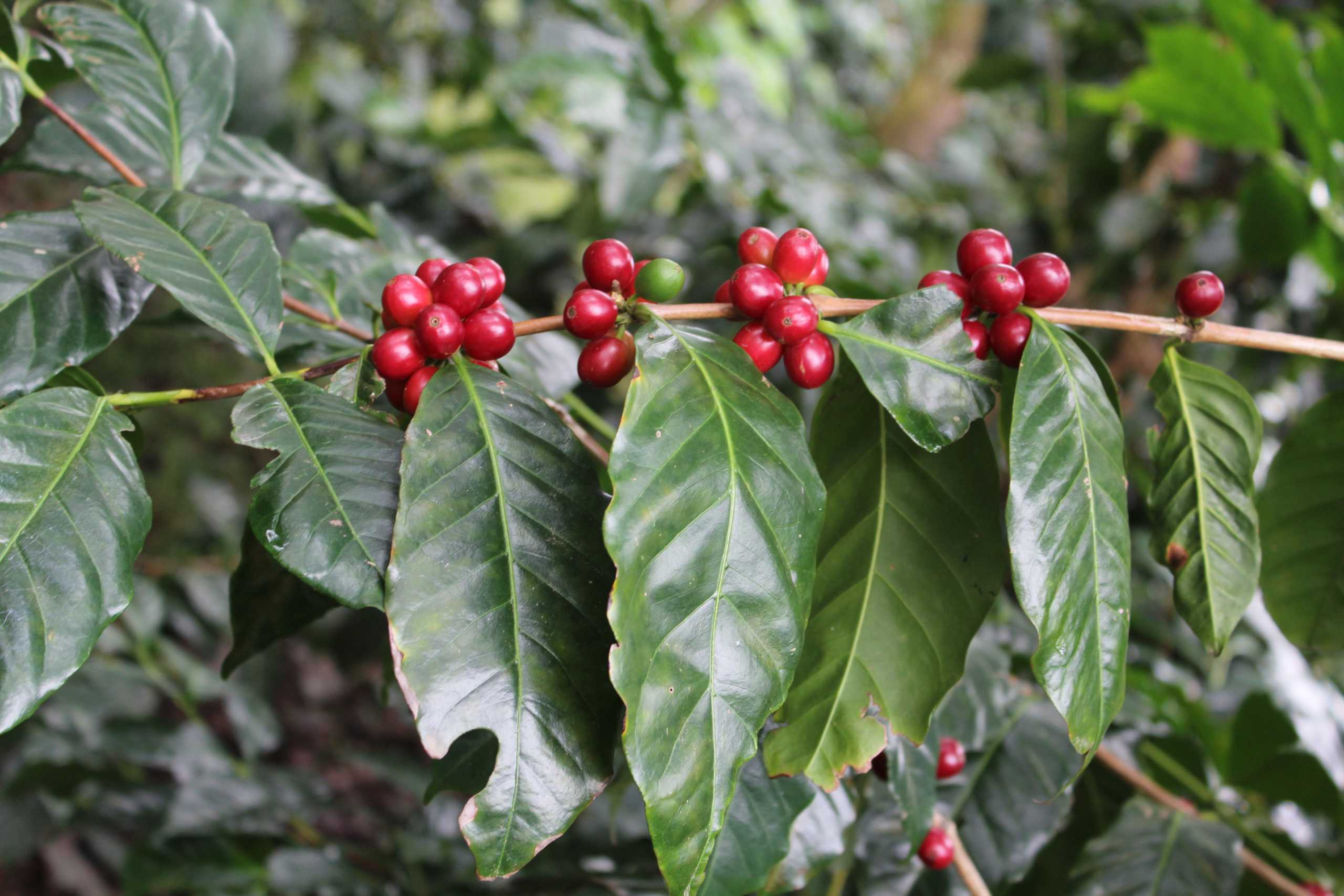
Iron pickup (Typica)
It has excellent taste and is recognized as a boutique coffee variety, but its yield is very low and it is vulnerable to rust, so more manpower management is needed. Tieka Coffee, native to Ethiopia and southeastern Sudan, is the most widely cultivated variety of coffee in the Western Hemisphere. The plant is strong, but it is not resistant to light. The top leaf of the iron pickup is red copper, which is called red top coffee.
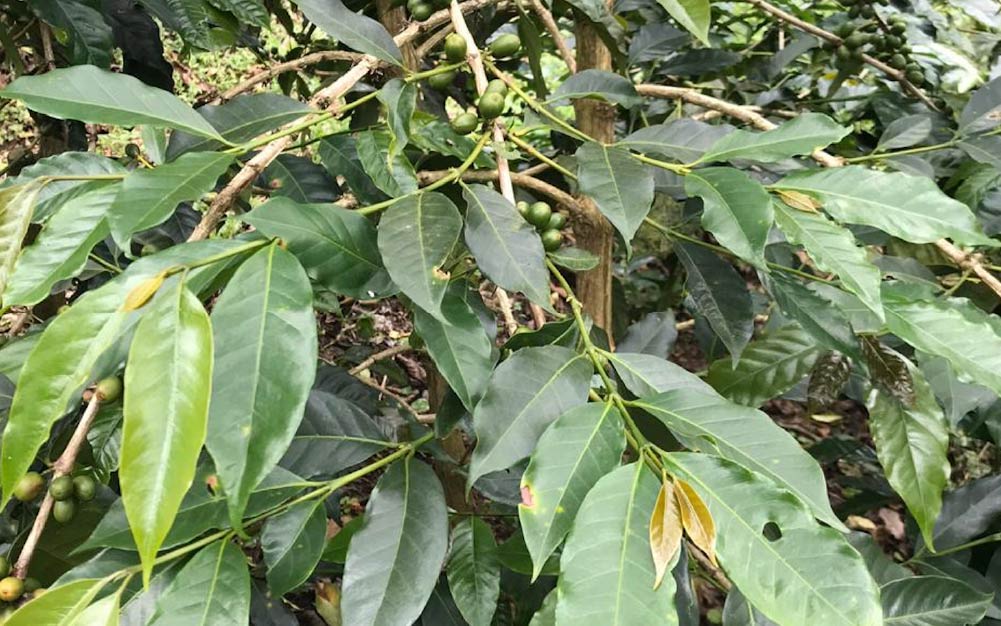
Kent (kent)
The Tibica hybrid, a hybrid of S288 and iron pickup, was found in the Kent Cafe Garden in Mysso, India in 1911, with high yield and rust resistance. The aroma of coffee is thicker than that of bourbon, and it has been introduced to new world producing countries such as Kenya and Indonesia.
| | handling method |
Raw beans in Tanzania are mainly washed.
Water washing is the most widely used treatment method at present, which uses the methods of washing and fermentation to remove the peel, pulp and mucous membrane.
Washing method: selecting → to remove pulp → fermenting → washing → drying → shelling → selection and classification.
| | rating |
Tanzania is graded in the same way as Kenya, according to the size and flavor of beans. The particle size is in the following order:
AA grade AA particle size (Screen Size) 17 Murray 18 size in AA Plus (AA+) cup with excellent quality (flavor, taste)
AB particle size (Screen Size) 15 Murray 16 size, accounting for the majority of production
C particle size (Screen Size) is smaller than that of AB.
TT blows lighter beans from AA and AB beans with an airflow filter.
T from C-grade beans, lighter beans blown by an airflow filter.
E Elephant Bean is a large mutant bean, also known as Elephant ear.
UG does not meet the above criteria
PB Peaberry, classified by appearance, independent of flavor weight
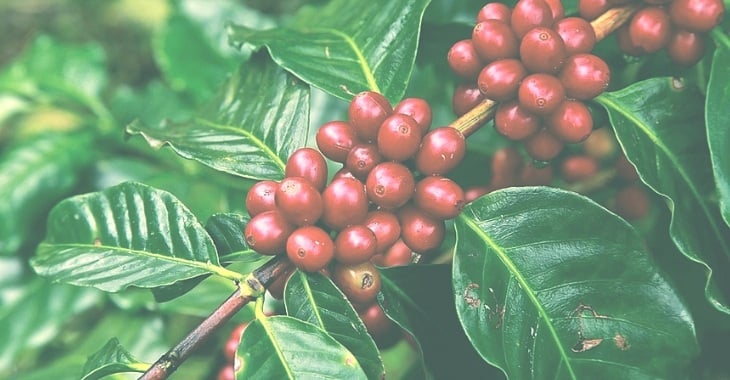
Flavor rating in order:
TOP、PLUS、FAQ
FAQ-"Fair to Average Quality" will have some slight blemishes, but Front Street believes this does not affect flavor.
Taste of coffee:
Tanzania is a typical East African country, bordering Kenya and Uganda in the north, Malawi, Mozambique and Zambia in the south, and Rwanda and Burundi in the west. Many people like to compare Tanzanian coffee with their neighbor Kenya. Compared with Kenya's high-quality coffee beans, Tanzanian coffee has less bright acid, more soft and gentle beauty, more sweet fragrance, and strong red wine flavor.
In Tanzania, Mount Kilimanjaro (Mt Kilimanjaro), Africa's highest peak, stands in the northeast. After World War I, it was named Trust. It was once a British colonial rule and became independent in 1964. Bourbon coffee was introduced as early as 1893. The green beans are mainly washed. Good quality high-altitude Tanzanian coffee, like Kenya, has active and bright acid performance.
Tanzania coffee producing areas in the north are Moshi, Mbeya and other producing areas around the foothills of Mount Kilimanjaro, and in the south are Songea-Ruvuma areas where the Ruvuma River flows. Due to the different growing terrains, the styles are slightly different. Coffee produced in Ruvuma region of south-west Tanzania has a bouquet and fruity aroma, which is different from coffee produced in Mt Kilimanjaro region of north.
Kilimanjaro is located in the northeast of Tanzania and is Tanzania's largest coffee producing area accounting for 75%. Generally speaking, Tanzania's coffee beans have extraordinary quality. The important producing area is in the mountainous area close to Kenya in the north. Coffee farmers grow coffee 85%. Local coffee farmers grow coffee between 1300-2000m above sea level. Its coffee flavor is different from that of neighboring Ethiopia and Kenya. He has the characteristics of both countries. The body thickness is good and the aroma of fruit and flowers is worth a try. Coffee belongs to dicotyledonous plants. Generally speaking, a coffee cherry fruit normally has a pair of coffee seeds, which is what we call coffee beans.
Relative to flat beans (pair of flat-sided beans), also known as caracol or caracolillo, which means small snail in Spanish; The yield of round beans, botanically, is said to be due to uneven pollination.(Arabica coffee species are self-pollinated plants, if a coffee flower has only one ovary, or only one ovary is successfully pollinated, only one seed can be produced), or nutrition is uneven during the growth process (usually more likely to occur in coffee fruits growing at the end of the coffee tree), nutrients are absorbed by only one of the cotyledons, and only the cotyledons that receive nutrients continue to grow into a single oval small egg coffee seed, thus having the name round bean. Normally, coffee plants produce about 3 to 5% of round beans, which are relatively rare in terms of yield, and because of their size and shape, round beans are often selected for sale separately by mesh screening.
Northern coffee is full of aroma, bright acidity, mellow taste, and thanks to the fertile volcanic soil, giving it a mineral water-like sweetness.
Southern coffee has a rich floral aroma and a smooth taste with elegant fruit acids.
Coffee growing area in Africa-Tanzania coffee is produced in the fertile Great Rift Valley of East Africa and is an outstanding representative of the quality coffee from this region. Its refreshing acidity and medium body complement sweet citrus and floral aromas. This coffee tastes great both hot and iced. With orange or berry, it will show its bright flavor. So did a coffee bean from Kilimanjaro, Tanzania, bought on Front Street.
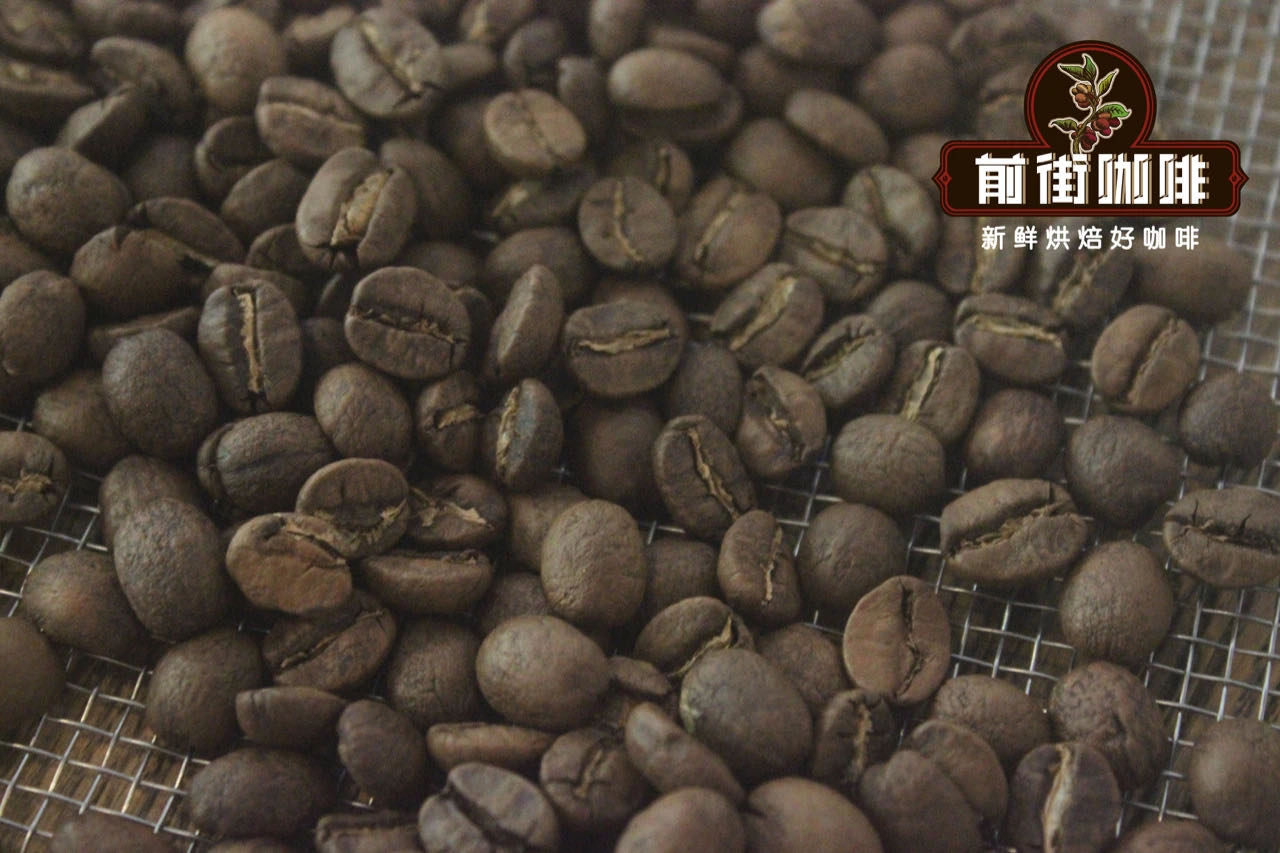
Representative coffee:
[Qianjie Coffee Kilimanjaro, Tanzania]
Producing area: Kilimanjaro, Tanzania
Altitude: 1300m--2000m
Variety: iron pickup
Treatment method: washing treatment
Degree of grinding: medium and fine grinding
Filter cup: hario v60
Water temperature: 90 degrees
Gouache ratio: 1:15
Cooking suggestion
Steam with 30 grams of water for 30 seconds, small water flow around the circle to 125 grams for sectional injection, water level drop is about to expose the powder bed, continue to inject water to 225 grams to stop injection, and so on when the water level drop is about to expose the powder bed, remove the filter cup, (steaming starts timing) the extraction time is 2 minutes 39 percent 00 ".
Flavor description: citrus, berries, honey, tea feeling
For more information about coffee beans, please follow the coffee workshop (Wechat official account cafe_style)
For professional coffee knowledge exchange, please add Wechat account kaixinguoguo0925.
Important Notice :
前街咖啡 FrontStreet Coffee has moved to new addredd:
FrontStreet Coffee Address: 315,Donghua East Road,GuangZhou
Tel:020 38364473
- Prev
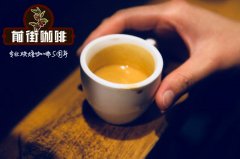
Kenya coffee origin introduction and Kenya AA flavor characteristics description
Kenyan coffee beans arrived in Kenya in the 19th century, when Ethiopian coffee drinks were imported to Kenya via South Yemen. But it wasn't until the early 20th century that bourbon coffee trees were introduced by St. John's. Austin Mission (St. Austin Mission) was introduced. Kenyan coffee is mostly grown at altitudes of 1,500 to 2,100 meters and harvested twice a year. To ensure that only ripe berries are picked,
- Next
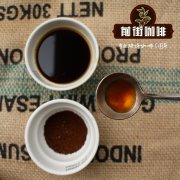
Costa Rican priest rose summer rich fruit aroma Verola processing factory priest coffee
For more information on coffee beans, please follow the coffee workshop (Wechat official account cafe_style) Father Coffee Tarraz-Frailes, a processing plant in Verola, Costa Rica, there are 63 coffee farmers, each with a coffee plantation of about 1-2 hectares, selling the red fruit harvested to large companies every year, making a meagre profit. For locals who believe in Catholicism
Related
- Detailed explanation of Jadeite planting Land in Panamanian Jadeite Manor introduction to the grading system of Jadeite competitive bidding, Red bid, Green bid and Rose Summer
- Story of Coffee planting in Brenka region of Costa Rica Stonehenge Manor anaerobic heavy honey treatment of flavor mouth
- What's on the barrel of Blue Mountain Coffee beans?
- Can American coffee also pull flowers? How to use hot American style to pull out a good-looking pattern?
- Can you make a cold extract with coffee beans? What is the right proportion for cold-extracted coffee formula?
- Indonesian PWN Gold Mandrine Coffee Origin Features Flavor How to Chong? Mandolin coffee is American.
- A brief introduction to the flavor characteristics of Brazilian yellow bourbon coffee beans
- What is the effect of different water quality on the flavor of cold-extracted coffee? What kind of water is best for brewing coffee?
- Why do you think of Rose Summer whenever you mention Panamanian coffee?
- Introduction to the characteristics of authentic blue mountain coffee bean producing areas? What is the CIB Coffee Authority in Jamaica?

